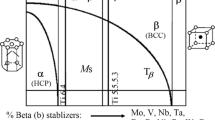Abstract
A process has been developed to produce molds or tooling using a steel or chrome- plated steel model. The investigation examined the effect of coating and model materials, model temperature and spray angle on the coating separation from the model surface, coating delamination, and surface quality. A polished model disk was heated and then plasma sprayed with iron, nickel, Ni- Al, or Ni- Cr- B- Si. It was found that the minimum temperature to facilitate entire coating removal was lower for steel models and varied be tween 200 and 450 °C depending on the material. However, at higher temperatures the higher bond strength produced by oxidation on the steel resulted in significant coating pullout. A chrome- plated model, heated to 600 to 700 °C, is required to produce a defect- free coating. The effect of substrate angle on open porosity is most critical for the Ni- Cr- B- Si alloy and least important for Ni- Al coatings. The sur face roughness of the plasma- sprayed molds is comparable to the corresponding models, permitting good surface detail reproducibility. Several molds and tools were produced for use in the glass, rubber, and plastics industries.
Similar content being viewed by others
References
W.F. Robb, Tool-Making Processes, Equipment and Methods,Plastics Mold Engineering, J.H. DuBois and W.I. Pribble, Ed., Reinhold, 1965, p 148-180
A. Kovalevskis and G. Balasnikovs, Method for Producing Moulds, USSR Patent 369183, 1965
L. Grant, Sprayed Metal Molds,Handbook of Plastic Materials and Technology, K.L. Mittal, Ed., John Wiley & Sons, 1990, p 1425-1433
S. Ashley, Rapid Prototyping for Artificial Body Parts,Mech. Eng., Vol 5,1993, p 50–53
K.M. McHugh, Materials Processing with de Laval Spray-Forming Nozzles: Net-Shape Applications,Thermal Spray Industrial Applications, C.C. Berndt and S. Sampath, Ed., ASM International, 1994, p 477–483
L.E. Weiss, D.G. Thuel, L. Schultz, and F.B. Prinz, Arc-Sprayed Steel- Faced Tooling,J. Therm. Spray Technol, Vol 3 (No. 3), 1994, p 275- 281
R.C. Dykhuizen, Review of Impact and Solidification of Molten Thermal Spray Droplets,J. Therm. Spray Technol., Vol 3 (No. 4), 1994, p 351–361
D.G. Moore, A.G. Eubanks, H.R. Thornton, W.D. Hayes, and A.W. Cigler, “Studies of the Particle-Impact Process for Applying Ceramic and Cermet Coatings,” AD-266381, National Bureau of Standards, Aug 1961
P. Spiro, Hard Nickel Electroformed Moulds,Int. Plast. Eng., Vol 2 (No. 8), 1969, p 359–361
A.P. van Petegheim and H.F. Demyere, Metal Spraying and Melting of Ni-Cr-B-Si Alloys for Increased Abrasion, Corrosion and Oxidation Resistance,Rev. Soudure, Vol 20 (No. 2), 1964, p 96–107 (in French)
N. Klein, Fusible Hard Flame Spray Materials for Wear and Corrosion Protection,Schweissen Schneiden, Vol 16 (No. 10), 1964, p 472–476 (in German)
C.C. Berndt and C.K. Lin, Measurement of Adhesion for Thermally Sprayed Materials,J. Adhes. Sci. Technoi., Vol 7 (No. 12), 1993,p 1235–1264
Y. Longa and M. Takemoto, High Temperature Corrosion of Laser-Glazed Alloys in Na2So4-V2O5,Corrosion, Vol 48 (No. 7), 1992, p 599–607
L. Bianchi, F. Blein, P. Lucchese, M. Vardelle, A. Vardelle, and P. Fauchais, Effect of Particle Velocity and Substrate Temperature on Alumina and Zirconia Splat Formation,Thermal Spray Industrial Applications, C.C. Berndt and S. Sampath, Ed., ASM International, 1994, p 569-574
M. Pasandideh-Fard and J. Mostaghimi, On the Spreading and Solidification of Molten Particles in a Plasma Spray Process: Effect of Thermal Contact Resistance,Plasma Chem. Plasma Process., Vol 16 (No. 1), 1996,p 83S-98S
A. Matting and H.D. Steffens, Contribution to the Study of Electric Arc Metal Spraying Process,Z. Metallkd., Vol 53 (No. 2), 1962, p 138–144 (in German)
A. Kovalevskis, “Investigation of Mould Production Appliances with Plasma Spraying,” Ph.D. dissertation, Byelorussian Institute of Agriculture, 1974 (in Russian)
A. Kovalevskis, Preparation of Moulds with Plasma Spraying,Progressive Methods for Producing Technical Appliances, I. Tarasov, I. Mochulski, and B. Birin, Ed., Technical Research Information Institute, Riga, 1969, p 50–66 (in Russian)
E.F. Gorman, New Developments in Gas Shielding,Weld. J., Vol 41 (No. 8), 1962, p 728–734
M.F. Smith, R.A. Neiser, and R.C. Dykhuizen, An Investigation of the Effects of Droplet Impact Angle in Thermal Spray Deposition,Thermal Spray Industrial Applications, C.C. Berndt and S. Sampath, Ed., ASM International, 1994, p 603-608
G. Montavon, C. Coddet, S. Sampath, H. Herman, and C.C. Berndt, Vacuum Plasma Spray Forming of Astroloy: An Investigation of Processing Parameters,Thermal Spray Industrial Applications, C.C. Bemdt and S. Sampath, Ed., ASM International, 1994, p 469-475
A. Kovalevskis, Christmas Tree Moulds from Temperature Resistant and Conducting Materials for Automated Production Lines,Toy Manuf., Vol 5 (No. 11), 1971, p 4–5 (in Russian)
Author information
Authors and Affiliations
Rights and permissions
About this article
Cite this article
Grossand, K.A., Kovalevskis, A. Mold manufacture with plasma spraying. JTST 5, 469–475 (1996). https://doi.org/10.1007/BF02645278
Issue Date:
DOI: https://doi.org/10.1007/BF02645278




